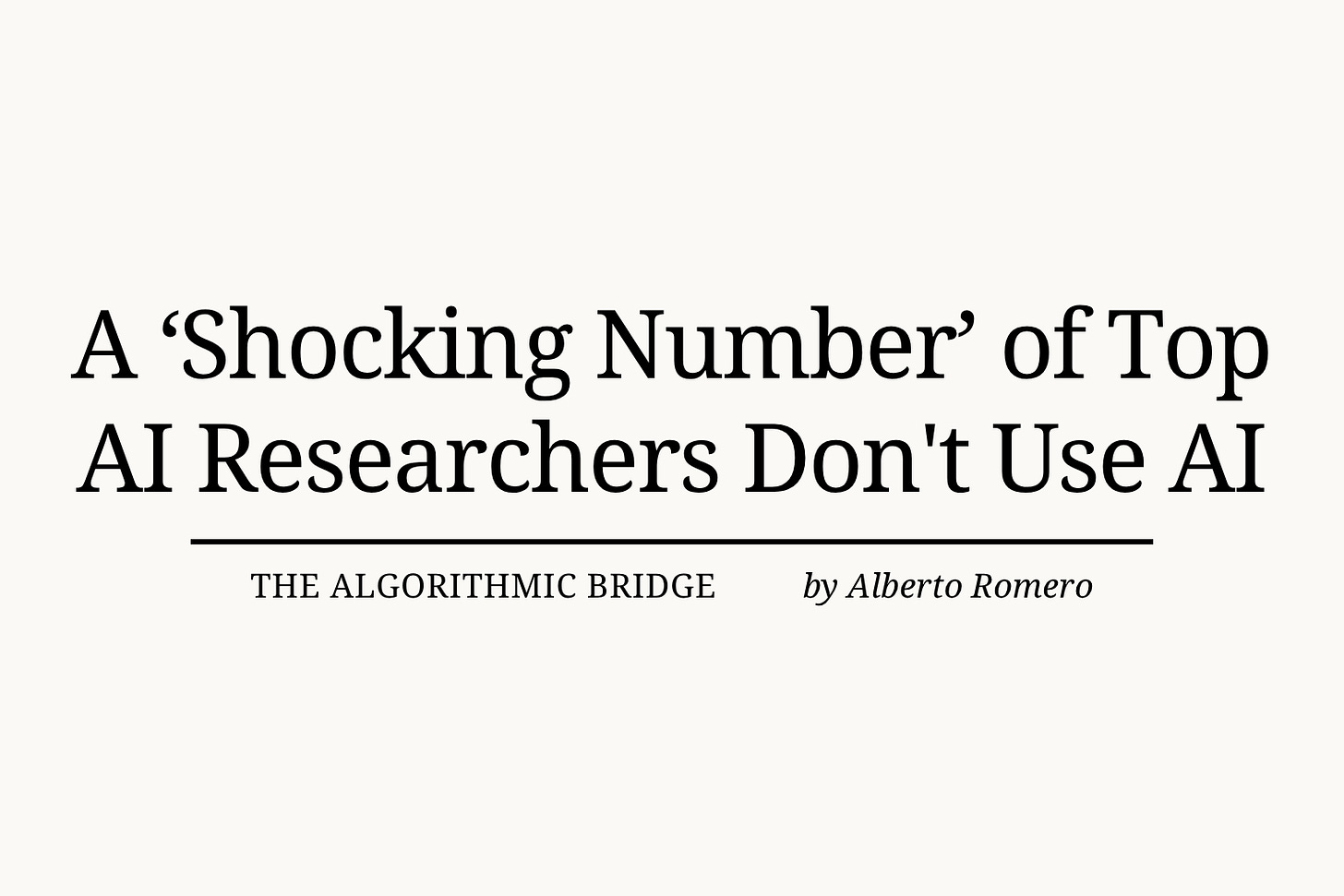A ‘Shocking Number’ of Top AI Researchers Don't Use AI
Isn't it weird? Yes, yes, it is
A respected source in the community says that a “shocking number” of frontier AI researchers are not using AI tools—not even their own. Coincidentally, a new Substack survey has found that half of the platform’s writers do. In other words: forward-minded nerds are not into the cutting-edge technology they themselves make while the self-serious literary crowd dips on it. How can we reconcile this paradox?
(Disclaimer: the former is anecdotal evidence from someone I trust; a “shocking number” doesn't necessarily mean “most” researchers and probably doesn’t. The latter comes from a statistical calculation on a sample of 2,000 writers; I will henceforth take both as faithful inferences of the current state of affairs.)
Let's start with the core question of this essay: Why are those building AI ignoring it? And some question-responses: Are the tools not good enough? Are researchers confident that AI can't improve their output? Are they jealously guarding their skills? Are they so good at their job that AI is a net negative? Are they lazy? Stubborn? Liars?
Coming from the author of “I'm Losing All Trust in the AI Industry,” those questions seem framed, but I'm genuinely puzzled. I use ChatGPT myself for work all the time. To an optimist like me—as much as I'm annoyed by the constant hype and wary of the decision-makers—AI researchers not using AI is weird. The only reason it is not outright suspicious is that this pattern goes beyond AI; it's so pervasive that it's actually a proverb.
We Spaniards say, “En casa de herrero, cuchillo de palo” (literally, “in the smith’s house, a wooden knife”). Most cultures and languages have some version of the idea. The French say “Les cordonniers sont toujours les plus mal chaussés,” which translates to “Shoemakers always wear the worst shoes.” The English analogous is also about bad footwear: “The shoemaker’s children go barefoot.” (Poor shoemakers, they’re made an example of in nearly 80% of the countries I checked.) The Japanese have one: isha-no fuyōjō (physician, heal thyself). The indians have one (Hindi/Urdu): chirāg tale andherā (there’s darkness under the lamp). The Persians have one: kuze-gar az kuze šekaste âb mi-xorad (the potter drinks water from broken pots). And so forth.
They are all thematically the same thing: Where you most expect to find something, it is conspicuously absent. In a way—if we accept this stereotyped version of history as fact—AI people not using AI is the norm, not the exception.
Keep reading with a 7-day free trial
Subscribe to The Algorithmic Bridge to keep reading this post and get 7 days of free access to the full post archives.


